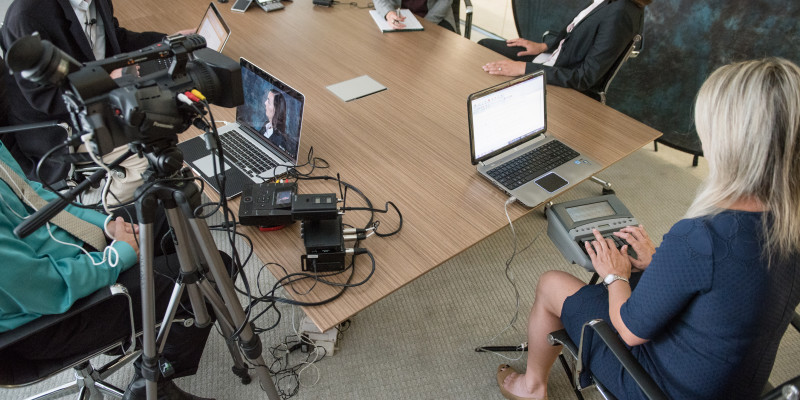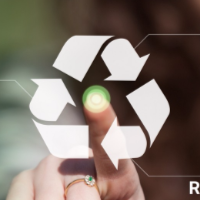Legal Videography: An Innovative Approach to Recording Legal Testimonies
Legal Videography: An Innovative Approach to Recording Legal Testimonies
Blog Article
The Relevance of Lawful Videography in Modern Legal Procedures
In modern lawful settings, the assimilation of lawful videography has actually become significantly significant, offering as an important tool in the documentation and presentation of proof. This method not just guarantees an accurate visual account of statements but additionally catches vital non-verbal cues that might affect juror perceptions. As the lawful landscape progresses with technological innovations, the ramifications of high-quality videography extend beyond simple documents, raising vital questions concerning its effect on judicial end results and the total integrity of the legal procedure. What continues to be to be checked out is just how these advancements could shape future lawful methods.
Definition of Legal Videography
Lawful videography describes the specialized practice of recording audio and aesthetic web content for use in legal settings. This practice encompasses various kinds of recordings, consisting of depositions, witness statements, and trial presentations, which offer to document vital elements of lawful proceedings. The main goal is to develop an accurate and dependable visual document that can be used in court or for pre-trial preparations.
Legal videographers are educated experts that use sophisticated recording tools and methods to ensure top quality video clip and audio capture. They are fluent in the legal requirements and requirements controling the admissibility of video evidence, making their experience important in the legal process.

Benefits in Legal Proceedings
The incorporation of legal videography into modern lawful procedures uses countless advantages that boost both the efficiency and performance of the judicial procedure. One key benefit is the exact and permanent paperwork of courtroom proceedings, which can be important for charms and record-keeping. Unlike standard transcription approaches, video clip captures non-verbal signs and the general context of testimonies, giving a richer, a lot more nuanced account of occasions.
Additionally, legal videography can improve the presentation of proof (legal videography). By visually showing facets of a situation, such as crash reconstructions or professional analyses, lawyers can communicate complicated information much more effectively, making it much easier for discretionary to realize crucial points. This can result in even more enlightened decision-making and outcomes
In addition, lawful videography promotes accessibility. Recorded depositions can be assessed from another location, enabling legal teams to prepare better without the restrictions of geographical limitations. This comfort aids in situation preparation and method growth.
Finally, the professional high quality of videography provides credibility to the proceedings, reinforcing the seriousness and value of the legal process. Find Out More legal videography. In recap, lawful videography considerably adds to a more transparent, efficient, and impactful judicial system


Enhancing Witness Testimonies
Witness testaments play an important duty in legal proceedings, and using videography significantly improves their impact and performance. By recording the nuances of a witness's disposition, tone, and body language, lawful videography provides a detailed understanding of the statement that written records alone can not share. This aesthetic representation aids in protecting the witness's original declarations, ensuring that jurors and attorneys can view the testimony in its desired type.
Furthermore, videography enables a much more engaging discussion of proof, as jurors are typically more receptive to audio-visual materials compared to typical paperwork. The capability to observe a witness's emotion boosts the credibility of their declarations, therefore raising the convincing power of their testimony. Additionally, video clip recordings can be made use of for training and preparation, allowing lawyers and witnesses to examine and refine their discussions.
In situations where witnesses may be not available for trial, videography guarantees that their testimonies can still be presented, protecting the stability of their accounts. In general, the combination of videography in legal procedures substantially boosts the high quality and reliability of witness testaments, fostering a much more educated and fair judicial procedure.
Influence On Court Comprehending
Recording witness testaments on video clip not only enhances their shipment however additionally considerably influences jury understanding of the instance. The aesthetic and acoustic elements of video recordings offer jurors with a much more immersive experience, permitting them to perceive nuances in tone, body movement, and psychological expressions that could be shed in written transcripts. This multi-sensory involvement promotes a deeper link with the testimony, helping jurors in grasping the complexities of the case.
Moreover, lawful videography can aid clear up complex information and make sure that key factors exist in a coherent fashion. Jurors commonly appreciate the chance to revisit essential testimonies during considerations, reinforcing their comprehension of the proof. The capability to observe Resources a witness's demeanor can also influence their reliability assessment, as jurors may develop judgments based on visual hints that resonate with their perceptions of truthfulness and reliability.
In addition, using video can streamline the presentation of proof, making it a lot more easily accessible and unforgettable Our site for jurors. Generally, the calculated implementation of lawful videography plays an essential role in boosting court understanding, eventually contributing to a fairer and extra educated legal process.
Future Trends in Legal Videography
Increasingly, lawyers are identifying the transformative possibility of emerging modern technologies in lawful videography. As the legal landscape develops, the integration of artificial knowledge (AI) and artificial intelligence is established to change the means video evidence is recorded, processed, and provided. AI formulas can evaluate huge amounts of video footage to recognize relevant sectors, enhancing performance and guaranteeing that crucial details is not neglected.
Moreover, advancements in online fact (VIRTUAL REALITY) and augmented truth (AR) are poised to give immersive experiences in courts. These modern technologies make it possible for jurors to imagine criminal offense scenes or recognize complex situations in an extra interesting manner, possibly boosting their comprehension and retention of proof.
The surge of cloud-based services likewise promotes the secure storage and sharing of video evidence, enabling smooth cooperation among lawful groups. legal videography. As remote hearings come to be more prevalent, high-grade lawful videography will play a crucial function in making certain that remote testaments are recorded accurately and presented successfully
Verdict
In verdict, legal videography works as a crucial tool in contemporary lawful procedures, improving the precision and quality of proof discussion. By capturing witness statements in an aesthetic layout, it promotes a much deeper understanding for jurors and maintains critical statements for future recommendation. As innovation remains to progress, the assimilation of premium videography is anticipated to increase, further solidifying its function in advertising the honesty and effectiveness of the legal process.
Report this page